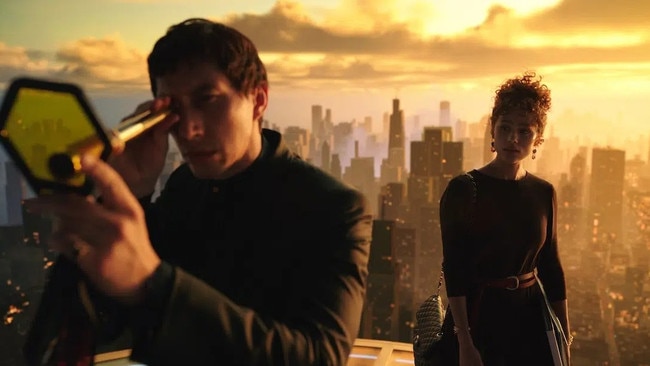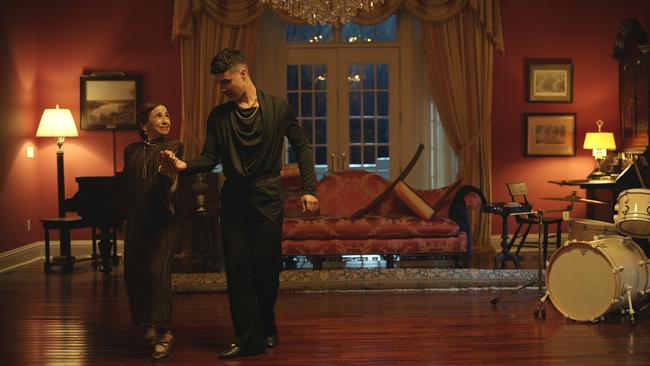Coppola’s Megalopolis is a challenge worth accepting
When people ask me which film I’d take to a desert island, I don’t need to think about it. Apocalypse Now. I would cheat and take all four versions on the one disc. This is that sort of film.

Francis Ford Coppola’s Megalopolis, a film that has been in the back of his mind for 40 years, is about the rise and fall of empires, destruction and creation, and whether the former must precede the latter.
It is set in the near future in a fictional American city, New Rome (read New York), and is inspired by an attempted coup d’etat in Rome in 63BC: Catilina’s attempt to depose co-counsels Cicero and Antonius. All of this is simply and crisply explained at the start.
The main characters are an idealistic architect, Cesar Catilina (a superb Adam Driver), the conservative New Rome mayor Franklyn Cicero (the ever intense Giancarlo Esposito), his daughter, Julia Cicero (Nathalie Emmanuel), Wow Platinum (Aubrey Plaza), who presents a financial program on TV, and Cesar’s rich uncle Hamilton Crassus (Jon Voight), who runs a bank.

Supporting roles include Dustin Hoffman as mayoral fixer Nush Berman, Laurence Fishburne as Fundi Romaine, Cesar’s driver (and the occasional narrator), and an off-the charts Shia LaBeouf as Cesar’s ambitious cousin Clodio Pulcher, who is a Trumpian character, though often in drag.
“When does an empire die?,’’ Romaine asks at the outset. “A time when its people stop believing in it.” This is a fundamental question posed by the film: Is the society in which we live the only one available to us, or is there an alternative and if so how do we make it happen?
Romaine adds: “When Rome falls the world falls with it.” Coppola considers today’s US the historical counterpart of Ancient Rome.
Another influence is Alexander Korda’s 1936 sci-fi film Things to Come, adapted for the screen by HG Wells from his 1933 novel.
Things to Come is about the fear of global war. And the people of New Rome are frightened and unhappy. Cesar, who has a Nobel Prize on the mantlepiece, wants to transform the metropolis into a “city that people can dream about”.
He describes the mayor as “the chief slumlord”. The mayor has his own plan to rejuvenate the city, which includes a new casino. He calls Cesar an “intellectual monster” whose “utopia will turn into a dystopia”.
His daughter, though, is attracted to Cesar, the man and his ideas.
“You can’t keep living in the Middle Ages,’’ she tells her father. Wow Platinum, known as the Money Bunny, also fancies Cesar.
Cesar has an “Emersonian mind”, by his own description, and a murky past. His wife died of an insulin overdose. His main building material is a new substance called megalon, which critics believe is unsafe. “Concrete and steel is safe,’’ chants the mayor’s fixer.
What unfolds is an epic film full of big ideas. Marcus Aurelius is quoted a fair bit, with good reason. As he did with Apocalypse Now – relocating Joseph Conrad’s 1899 colonial novel to the Vietnam War – Coppola morphs New Rome into old Rome, with fashion shows as gladiatorial contests and Ben-Hur-like chariot races for VIP entertainment.

It is spectacular to look at – overall and as a snapshot of imperial decay. The set design, costume design and film-work (Romanian cinematographer Mihai Malaimare Jr, who has worked with Coppola before) are top class.
Driver is coming into his own as an actor. In films such as this one, and Michael Mann’s recent Ferrari, he commands the screen. At one point he does the “To be or not to be” speech from Hamlet and it is powerfully relevant, especially the line about the potential use of a “bare bodkin”.
The rest of the cast are impressive as well. LeBeouf’s Trump-like character, who hungers for power and sex, especially with Julia Cicero, tells his supporters, “We’re taking our country back.”
What is this film about? I think Cesar has the answer at one point. “It’s about … everything.”
I know I will rewatch it. It’s one of those movies where the more you see, the more you think, the more you learn.
When people ask me which film I’d take to a desert island, I don’t need to think about it.
Apocalypse Now. I would cheat and take all four versions on the one disc. Megalopolis is that sort of film.
Megalopolis (MA15+)
138 minutes
In cinemas
★★★★½




